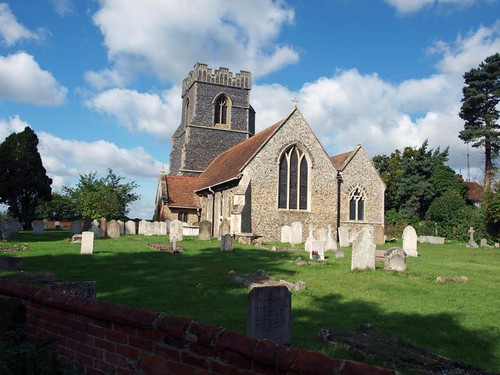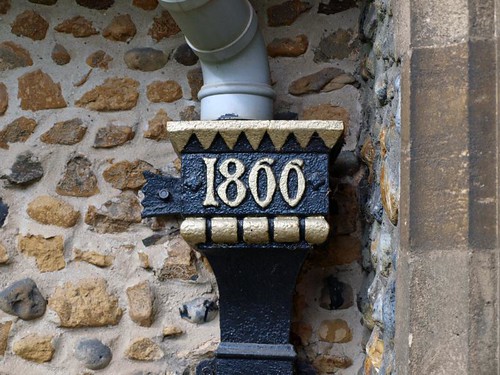ST MARY MAGDALEN. Fine East Anglian W tower, specially interesting because dated. In the floor of the tower a BRASS inscription to John Deth d. 1477 and Margery, his wife, d. 1483 ‘specialis benefactor istius ecclesie et campanile ejusdem’. The tower is of knapped flint with diagonal buttresses, a three-light W window, two-light bell—openings, and battlements with flushwork panels - all in the style of the Brightlingsea tower (which can be seen across the fields to the W) but a little more modest. The church itself is of pebbles - the N aisle looks as though it were a cobble pavement put up vertically. C14 S porch with quoins of tiles on the pattern of the Norman use of Roman bricks. N aisle arcade of 1866, ornate and lifeless. - FONT. Octagonal, Perp. Stern with buttresses and tracery panels, bowl with leaves and shields. - BRASS. John Clare d. 1564 and family. Only one wife and some children remain.
THORRINGTON. It has farms and other buildings as old as Shakespeare’s plays, the best old piece of brickwork being the garden wall of Gatehouse Farm, with its moulded and crowstepped arch. A field gate leads us to a timbered hall with a garden hidden from the churchyard by a row of ash trees. Behind the barn is a splendid grove of oaks. The pinnacled tower greets the tower of Brightlingsea on its hill across the valley. Two medieval sundials are scratched on one of its buttresses. There is one portrait of olden days, representing one of the two wives of an unknown John Clare, who died in 1564; five of their children are here too. A good friend of the church 100 years before the Clares, John Deth, lies in the tower, with a tribute to his generosity. The 16th century font has a carved pomegranate on it, and the 14th century piscina has the head of an ape.


No comments:
Post a Comment